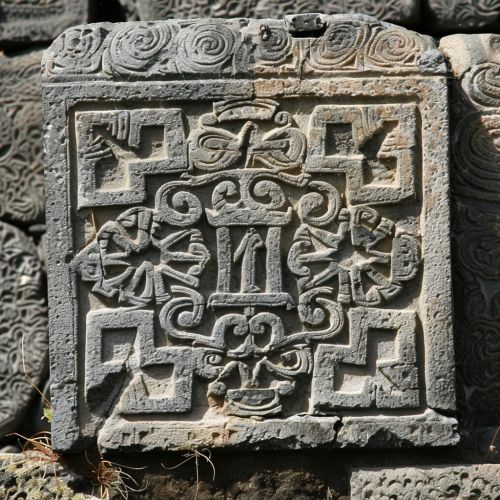Armenian alphabet
Introduction
The Armenian alphabet is a unique writing system that was created in the 5th century AD by Mesrop Mashtots, an Armenian linguist and ecclesiastical leader. It is used to write the Armenian language and has been in continuous use since its creation. The alphabet consists of 39 letters, each with a distinct sound, making it a phonetic alphabet.
History
The Armenian alphabet was created during the reign of King Vramshapuh of Armenia. Mesrop Mashtots, under the patronage of Catholicos Sahak Partev, was tasked with creating a unique alphabet for the Armenian language. The need for an alphabet arose due to the spread of Christianity in Armenia and the need for religious texts in the native language.


The Armenian alphabet was influenced by the Greek and Syriac scripts, with the order of the letters based on the Greek alphabet. The first letter, 'A', is derived from the Greek 'Alpha', and the last letter, 'K', from the Greek 'Omega'. The Armenian alphabet was completed in 405 AD and was immediately used for translating the Bible and other Christian texts into Armenian.
Structure
The Armenian alphabet is an alphabetic script, meaning each letter represents a phoneme or sound. It is written from left to right and does not have upper or lower case letters. The alphabet consists of 39 letters, with 36 original letters and three added during the Middle Ages. Each letter has a numerical value, and the letters are also used for numbering.
The alphabet has seven vowels and 28 consonants. The seven vowels are 'a', 'i', 'schwa', 'e', 'o', 'u', and 'y'. The consonants include stops, affricates, fricatives, nasals, liquids, and semivowels. The Armenian alphabet also includes ligatures, which are combinations of two or more letters.
Usage
The Armenian alphabet is used to write the Armenian language, which is spoken by the Armenian people in Armenia and the Armenian diaspora worldwide. The alphabet is also used in the liturgy of the Armenian Apostolic Church and the Armenian Catholic Church.
The Armenian alphabet has been adapted for use in other languages, including the Yezidi language and the Western Armenian dialect. The alphabet is also used in education, literature, and media in Armenia and by the Armenian diaspora.
Modern Developments
In the modern era, the Armenian alphabet has been adapted for use in digital media. Fonts for the Armenian alphabet are available for computers, smartphones, and other digital devices. The alphabet is also used in social media, online publications, and digital communication.
In addition to its practical use, the Armenian alphabet has cultural and symbolic significance for the Armenian people. It is a symbol of national identity and cultural heritage, and it is celebrated annually on Armenian Alphabet Day.
